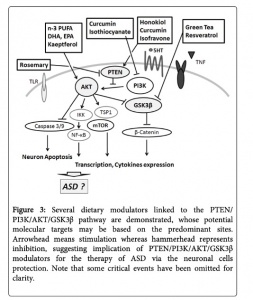Autism Spectrum Disorder (ASD) impacts every person differently. Currently there are no set treatments for ASD known to cure the disorder, however there are interventions that have been explored that may manage symptoms. These therapies aim to allow the individual to be more independent and able to partake in tasks with daily living skills, social interaction, and allowing the person to be involved and engaged in the community. Given many of these tasks are often learned from a very young age, most treatments (but not all), are implemented in children with ASD.
ASD treatments can be broken down into four different types: Behavioral/ Communication, Dietary, Medication, and Complementary and Alternative Medicine.
Behavioral and Communication Approaches
The most common behavioral approach is Applied Behavior Analysis (ABA), which is known for encouraging positive behaviors while discouraging negative ones in hopes to improve skills. There are many different categories of ABA, some of which include occupational therapy, which aims to help individuals becomes as independent as possible through guidance in learning tasks such as eating, bathing, dressing, and improving social interaction. “Floortime” is particularly used for children and it focuses on emotional and relational development through connections with caregivers. It works with a child’s coping with sights, sounds, and smells. Assistive technology helps by using technology devices like electronic tablets or communication boards to help those with ASD communicate and interact with others.
Dietary Approaches
Dietary approaches may be helpful in managing ASD symptoms. The approach may include checking for mineral or vitamin deficiencies, removing certain foods from a child’s diet, and supplementing for any deficiencies. This phenomenon is thought to be the outcome of food allergies or lack of vitamins and minerals that result in ASD symptoms. Likewise, diets may contribute to the improvement of ASD therapy via modulation of PTEN/AKT and GSK3B signaling. Diets that involve PI3K/ AKT pathways could result in neuroprotective effects. The nutrients in food can either activate or inhibit the PI3K/ AKT and GSKB pathway. Specifically, curcumin inhibits PI3K, as shown in Figure One, which is overactive and highly dysregulated in autism, which suggests it’s use as a modulator for therapy in ASD.

Medication
While there are no medications known to “cure” ASD, some medications may lessen symptoms or improve functioning. Some examples are medicines that manage energy levels, focus abnormalities, anxiety, depression, behavioral reactivity, and seizures.
Complementary and Alternative Approaches
Complementary and alternative medicine treatments (CAM) are often used in addition to or instead of traditional treatments and can often be quite helpful at managing symptoms. They include but are not limited to mind-body medicine, special diets, dietary supplements, chelation (removing heavy metals like lead from the body), or biologicals like secretin. Additionally, craniofacial and dental professionals may help to meet the oral healthcare needs of those with ASD.
Overall, while there may be no cure for ASD, yet, the treatments and therapies available all have a common goal to improve the daily life of those with ASD, by helping them to become more independent and capable of navigating the day to day events that occur.
